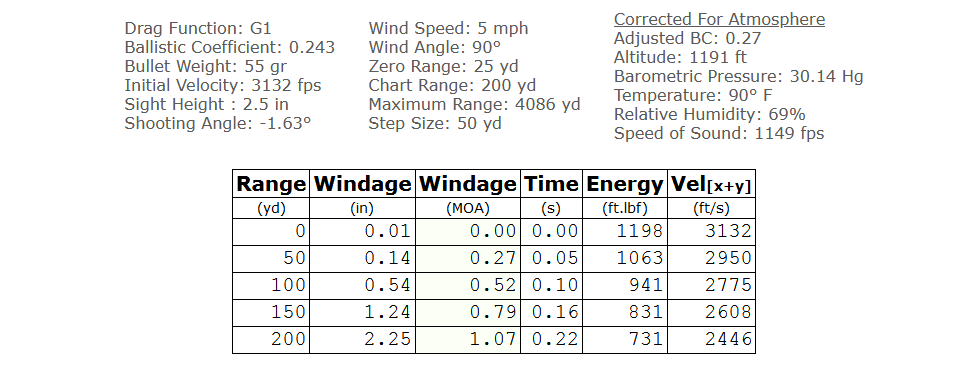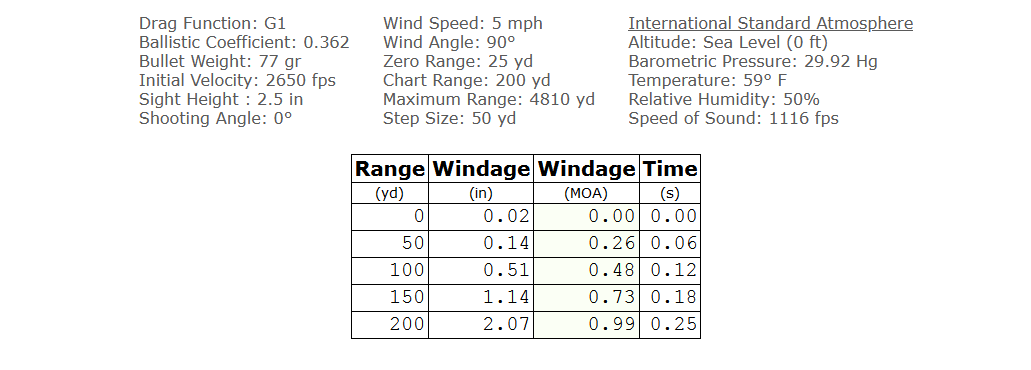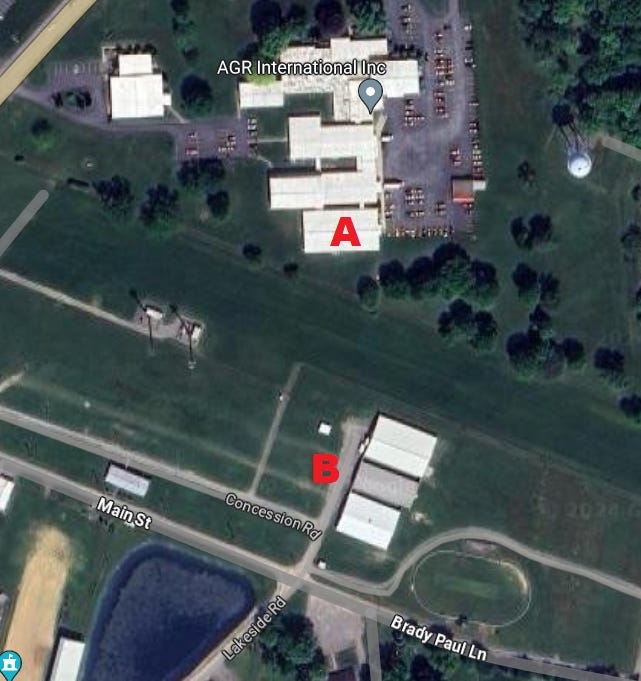Some of the dust and false rumors have cleared, and more facts are available, but we still have… questions.
How did one pencilnecked 20 year old kid with a cheap AR overturn the table in the highest-stakes game in the world, and almost bring down the most powerful republic in the history of history itself?
Why was this allowed to happen?
Was this made, rather than allowed, to happen?
What do we do now to avoid living in interesting times?
What do we do if we cannot?
Today, we’re going to draw a line through this whole event, connecting the first question to all the others. Not by confusing you with a step-by-step timeline or infodump of everything we know, but by focusing on important facts and moving straight through them to their implications, first-order, second-order, and so on.
The first important fact:
A 135 meter shot, from the prone position, at head-sized target, is not difficult for a properly trained rifleman. It is not even an interesting challenge.
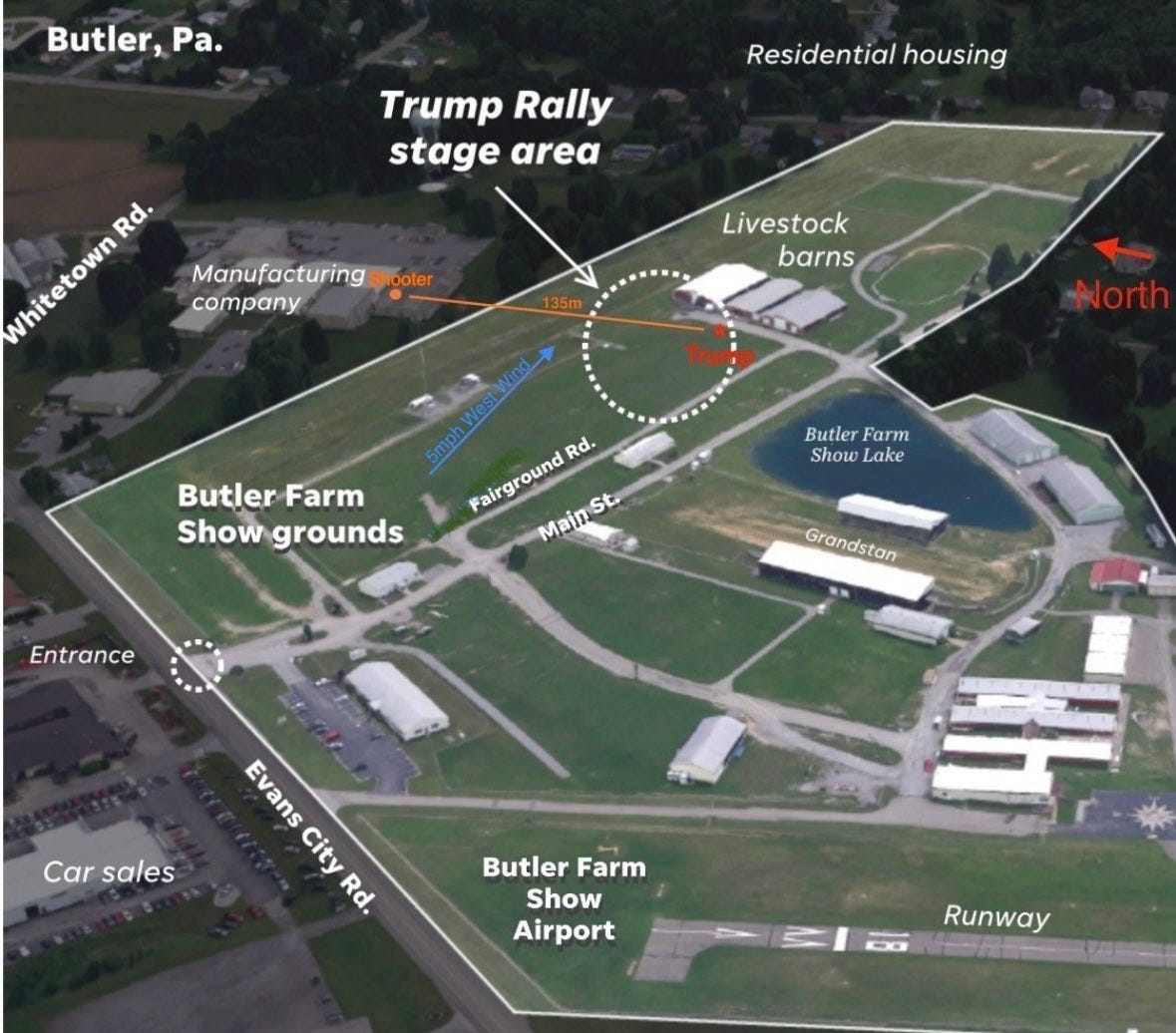
If you are a rifleman — and many of my readers are — you already know this.
However, if you are not, I, or either of my wives, could train you to make this shot in the space of a single weekend, assuming you are physically able and not mentally retarded. Do not be intimidated or impressed by the 135 meter distance. It may sound like a lot to you. To a rifleman, it is not.
Riflemen measure targets not inches or centimeters, but in minutes of angle, a unit of 1/60th of a degree. This is an angular measurement which tells us not how large the target is in absolute terms, but how much of the rifleman’s field of view it occupies.
At the muzzle of an AR-pattern rifle, 1MOA is approximately the thickness of a piece of notebook paper. At 100 yards away, it is approximately an inch (actually a tiny fraction more), about the width of a postage stamp. At 200 yards, it is about 2 inches, and so on.
Almost as if the universe were conspiring to make the math easier, 135 meters is almost exactly 150 yards. Which makes each MOA 1.5 inches.
The head of a 6’3 adult male would likely be about 6 inches wide and 12 inches high, if you include the neck, which is equally terminal to be shot in by a rifle round.
Thus, the assassin’s task was to hit, once in five shots, a target measuring 4x8 MOA.
The standard I expect, when training riflemen, is that they be able to hit a 4x4 MOA square from the unsupported prone position, with 4 out of 5 shots from a properly set up rifle. I would expect 5/5 from myself or either of my wives.
The unsupported prone firing position looks like this:

It is called “unsupported” because it’s defined as not allowing any kind of mechanical support between the rifle and the ground, only muscle and bone.
It is a training position. We train this way, at least some of the time, because we need the skill of being able to make prone shots without mechanical support, which may not always be available. And it teaches skills which transfer to supported shooting.
When we actually make a prone shot, outside of training, on, say, a deer, or anything else we really want to hit, we try to use mechanical support, such as a bipod, possibly with a rear bag, or a sandbag, or, if nothing else, by resting our magazine on the deck.
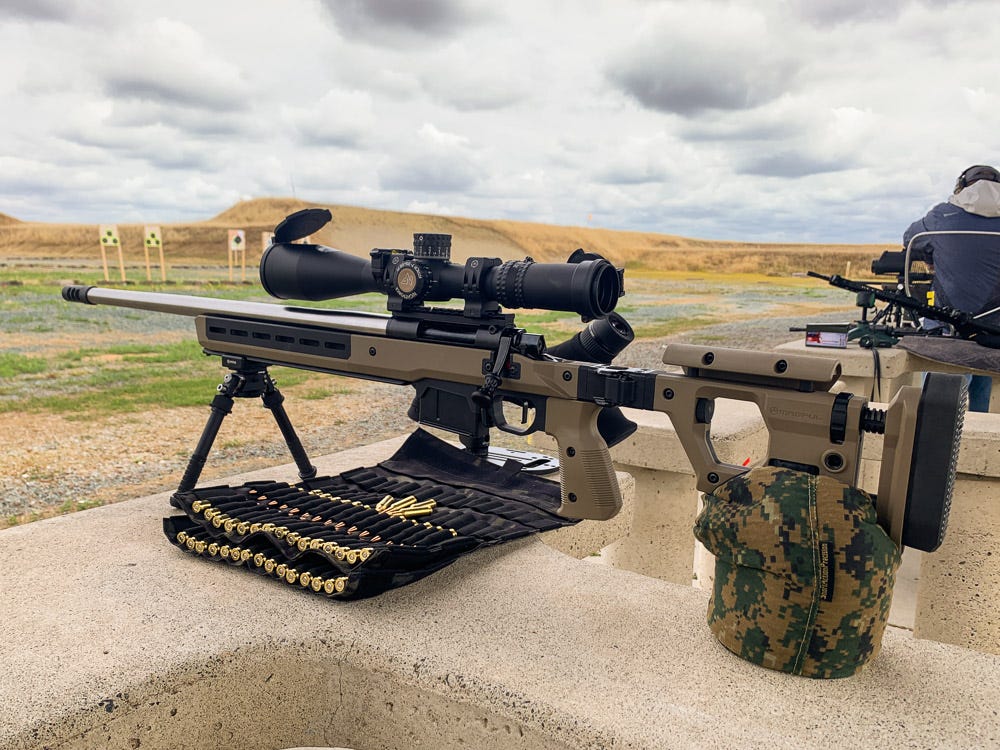
(Ignore any folklore that tells you that resting on the magazine will induce feed malfunctions. This hasn’t been true since Vietnam. If you have a magazine that misfeeds when weight is put on it, throw it away, it’s defective.)
There is no reason not to do this if we can, and it makes our fire considerably more accurate. Which makes the task of hitting a 4x8 MOA target easier still.
Next, we come to the subject of wind. Many experienced shooters have suggested that wind may have played a role. Erik Prince, who certainly knows what he is talking about, has gone so far as to state that wind definitively was what caused the assassin to miss.

However, since I am not only a shooter but an engineer, I don’t trust my gut. I run the numbers. Here are the numbers.
If we assume that Mr. Prince is correct in guessing that the assassin was firing 5.56x45mm NATO rounds (the most common AR-platform caliber), and the specific loading was the common M193/XM193 55 grain full metal jacket round out of 16” barrel, adjusted for humidity, temperature, and barometric pressure at 6:11 pm July 13 in Butler, PA:
(Note that the shot angle, -1.63 degrees, is based on my off the cuff estimate that the assassin’s position was 10 feet higher than Trump’s head. I was unable to find good data for the height of the roof of AGI International and the podium. It doesn’t make much mathematical difference.)
As we can see, at 150 yard, wind deflection for a “full value”, meaning perpendicular, wind at 5mph, is 1.24 inches. So Mr. Prince’s gut estimate was only about .76 inches off.
What’s more important is that this is a 0.79 MOA, which is not enough to induce a miss on 4MOA wide target, unless your hold is already considerably off center, especially if you are experienced enough to hold for wind at all.
The correct wind call for this shot, in a left-to-right wind, would be “favor left”, or “hold left edge” at the very most.
What this means is that a good center shot would not have missed in this wind, and that a rifleman who knew the basics of wind could have compensated without knowing the exact wind value, only its rough magnitude and direction.
Furthermore, if the assassin were a well-trained rifleman, it is unlikely that he would select the cheapest, most basic range ammunition for the most important shot of his worthless life.
Let’s rerun the numbers for a 77 grain Sierra Match King @ 2650fps:
Down to barely over an inch, or 0.73MOA. That’s less than the mechanical variance from shot to shot of most low-end AR-platform rifles.
Wind may have been a factor, but it does not seem to have been the whole story. Wind would not have been sufficient to make a well-trained rifleman miss all 5 shots.
Additionally, as you can see in this excerpt from google maps, the roof of AGR International, from where the assassin fired, at “A” is almost directly north of Donald Trump’s position at “B”.
As you can see from this screen capture, the prevailing winds at 1811 (6:11Pm) on July 13th were 5mph North to South, and thus would have provided the assassin’s bullets with a tailwind, not a full value crosswind.
While errant gusts are not impossible (hence the reasoning above), the likelihood of an interfering wind seems low.
With all due respect to Mr. Prince’s unquestioned subject expertise, any analysis is only as good as the raw data it is based on, and I must reject the wind hypothesis.
Next we come to the assassin’s shooting position. Perhaps it was difficult to build a good position on the sloped roof of AGR International?
Abstractly, this would seem plausible. However, here is a view of the roof in question, from the perspective of a rally attendee:
And… no. Clearly the slope of the roof is perpendicular to the direction the assassin shot in, thus he did not have to brace against a downward or upward sloping roof.
In fact, if you observe the area I have circled in the picture, labeled “A”, there appears to be a ventilation fan on the roof, ideal for bracing a rifle on top of or against, to stabilize a shooting position.
In short, if I were designing, in my head, the ideal shooting position for taking out a human target, it would look a lot like this.
Next, we consider the question of Donald Trump’s head movement as he spoke. This may seem, to those who are not riflemen, to be a considerable source of difficulty.
However, while speakers do move their heads, they do not bob and weave like a prizefighter trying to dodge a left hook. They turn to look at different members of the audience, sometimes making brief eye contact, depending on the size of the crowd.
A turning head alters its angular size, but does not move its axis of rotation from side to side. The center of the target, thus, does not move unless the speaker moves is feet, or leans. These sorts of movements are not unheard of, but less common.
What this means is that, from the perspective of an assassin considering Donald Trump’s head as a target with a certain position and angular size, it was moving a lot less than you would think.
Could Trump have moved significantly between the time the shot broke and the time the bullet reached him?
Again, no. In the charts above, flight time for our two hypothetical bullet weights are 0.16 seconds and 0.18 seconds, respectively. For comparison purposes, the average time required by a human being to blink is 0.1 seconds. This does not allow for a significant amount of head movement. The assassin would not have had to “lead” his target (a much more difficult skill).
There are a few other factors that could have foiled the assassin’s attempt to set up a good shot:
Nervousness, known among shooters as “buck fever”.
Building his position ineptly due to time pressure and the fear of being spotted.
Recoil impeding followup shots. Technically, the challenge is not the actual recoil, or backward force, but muzzle flip — the tendency of the muzzle to rise based on the vector sum of forces involved, pointing the rifle up and away from the target.
An improperly zeroed rifle and sighting system.
I have listed all of these together because they can all be described as “skill issues”. In other words, they are challenges faced by all riflemen, who set up their gear and practice their skills so as to mitigate them.
The point of examining all these factors is to demonstrate that, while any one of them could have foiled a novice rifleman, none of them, singly or in combination, could be expected to foil an expert.
All of this leads to …
The first important conclusion:
Donald Trump’s assassin was not foiled by anything the US Secret Service did, but by his own lack of sufficient marksmanship for his chosen task.
Up until he was stuck by the countersniper round which ended his worthless life, the assassin does not appear to have been significantly impeded in his mission by anything the USSS did.
What this means is that the USSS completely failed. The magnitude of its institutional failure is not lessened by the ineptitude of its foe… because a protection detail cannot, must not, assume that its foes will always be inept.
The executive protection agency for the most powerful nation in the history of the known universe just got rolled by a complete amateur, who didn’t even have the F-15s or nukes that tactically clueless democrats assure us are absolutely necessary for taking on the government.
The USSS is just as incompetent, and just as culpable, as they would be if we were watching Trump’s funeral right now.
It was sheer luck that saved us all from a Constitutional crisis, and an existential threat to the republic… possible succession, dissolution, or even civil war.
In the upcoming parts of this article, we will discuss how this failure happened, why it happened, and what it means.
Grey’s Law, The Republic, and You (Part 2)
Grey’s Law, The Republic, and You (Part 3)
Devon Eriksen is author of the novel Theft of Fire: Orbital Space #1. Learn more, read sample chapters, and find retailers on his website DevonEriksen.com, or get it on Amazon today.




